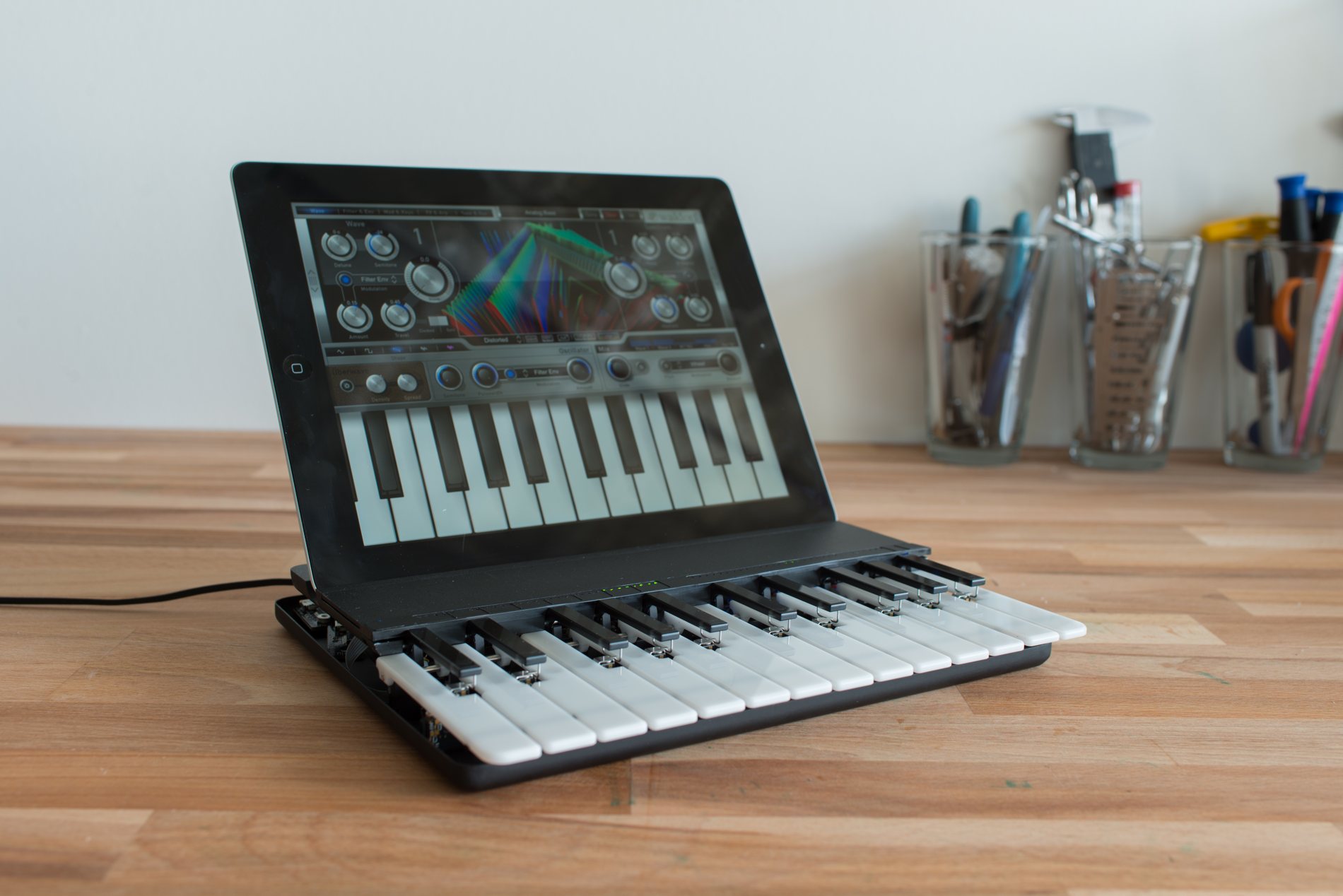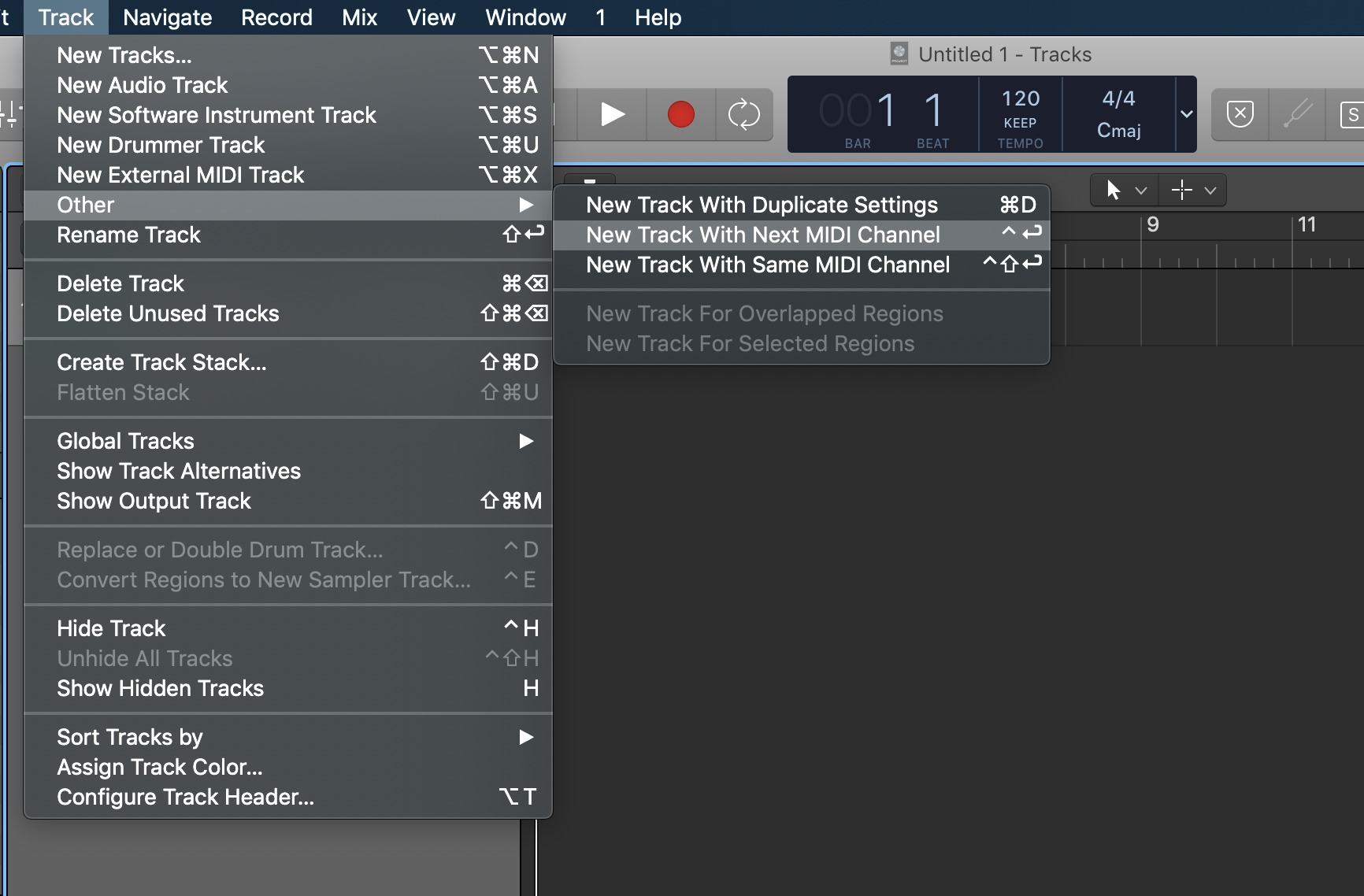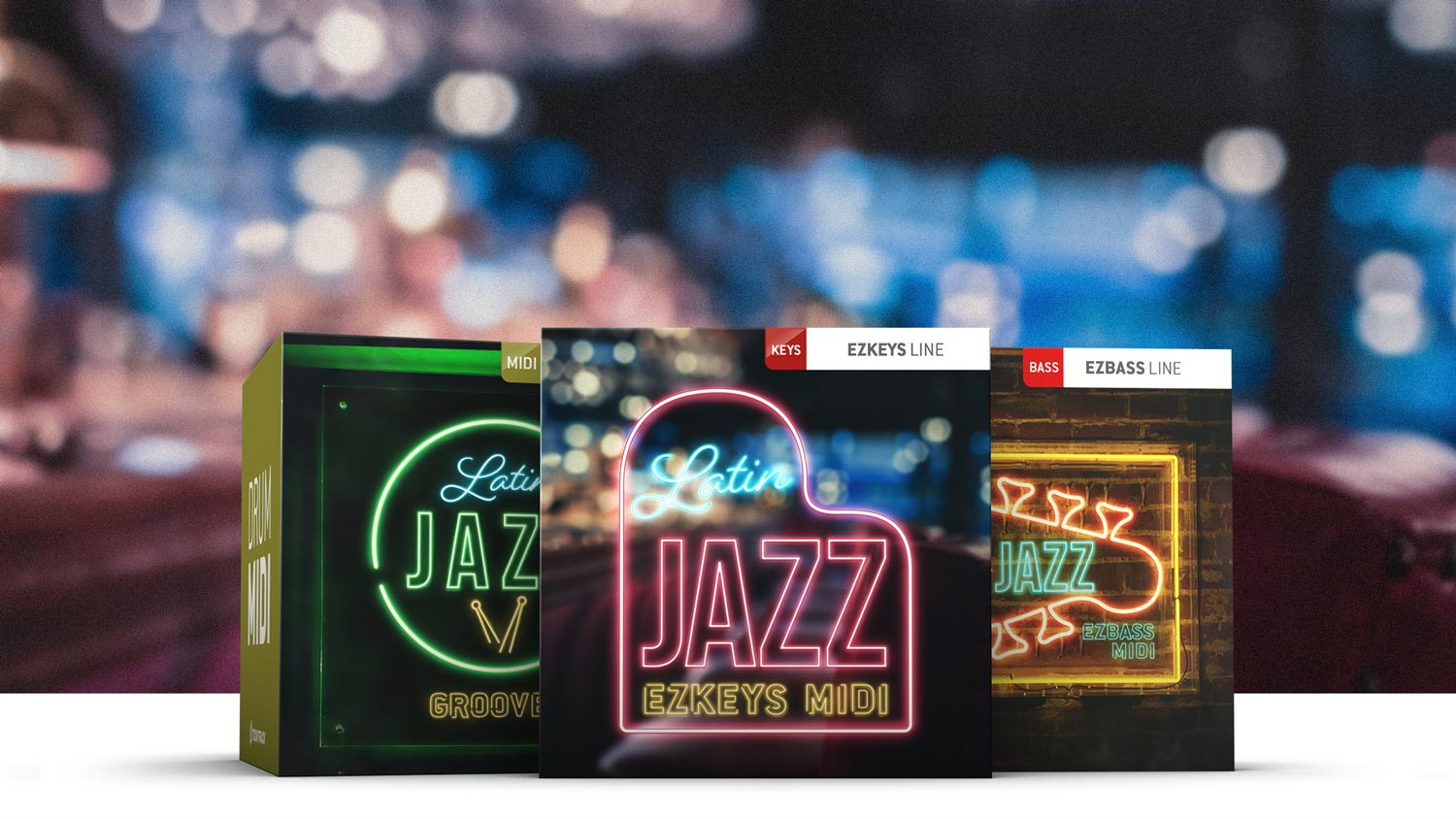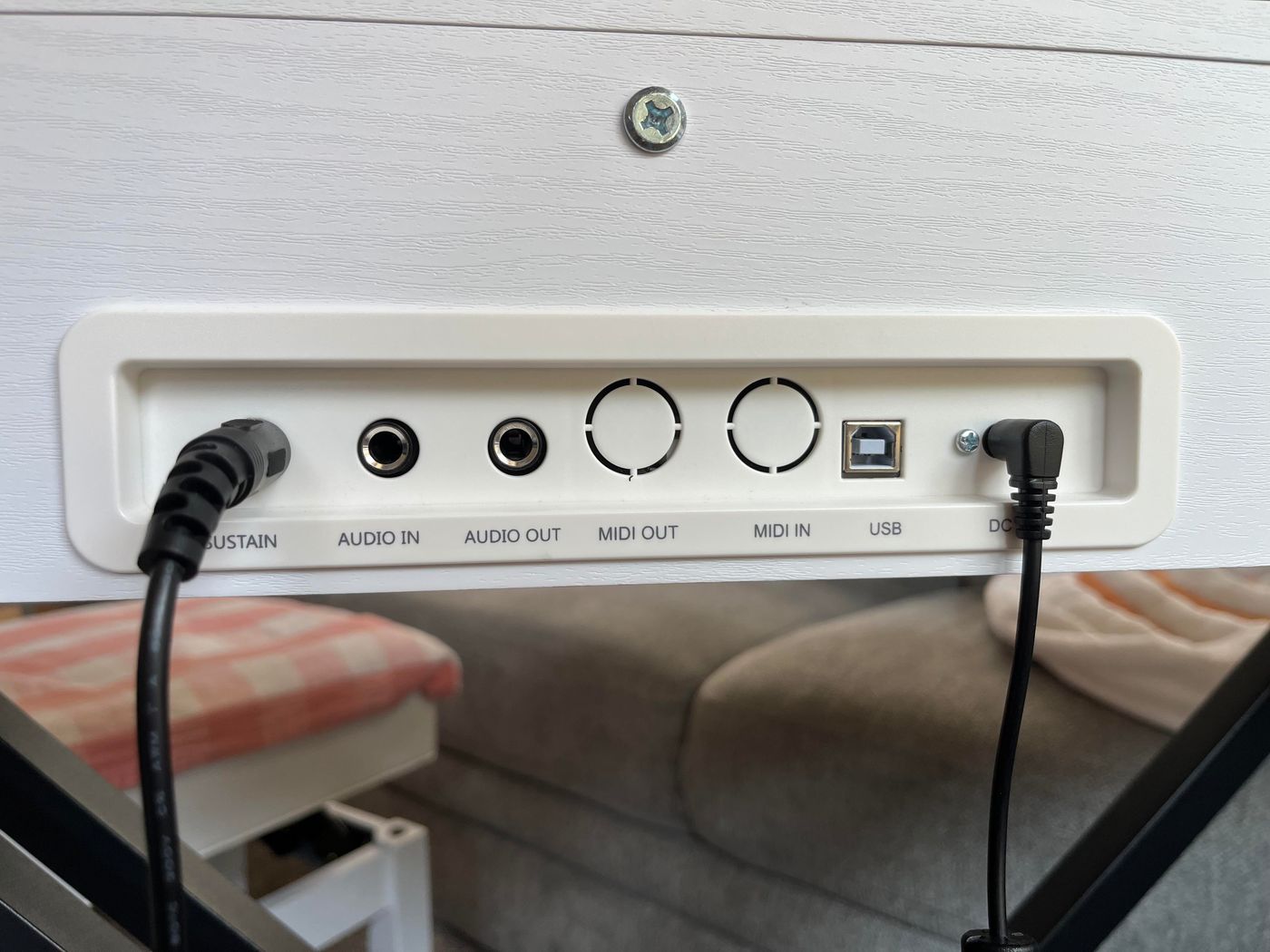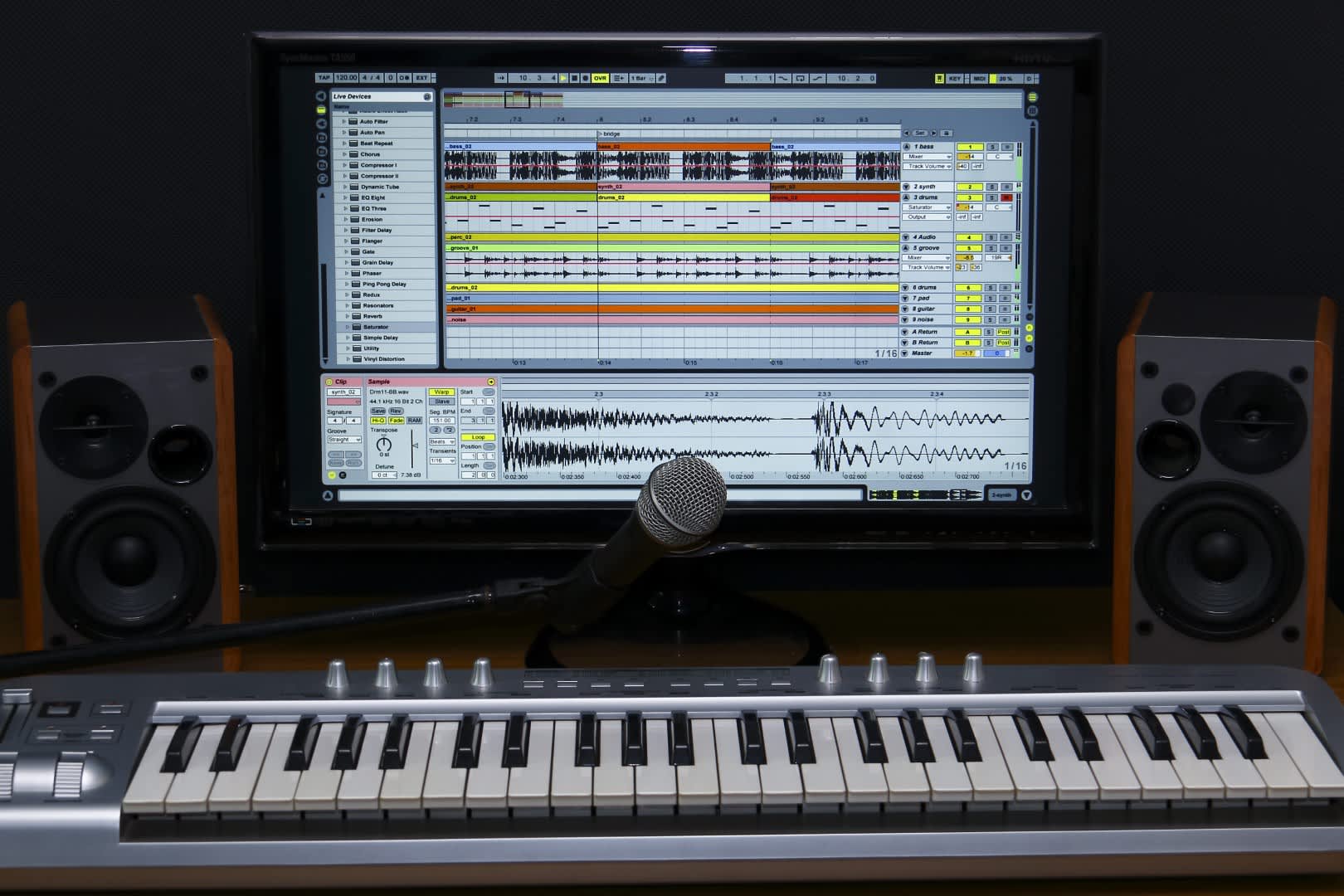Home>Production & Technology>MIDI>What Is MIDI USB?


MIDI
What Is MIDI USB?
Modified: February 22, 2024
Discover the convenience of MIDI USB and its seamless integration with electronic instruments and devices. Learn how MIDI enhances your music production workflow.
(Many of the links in this article redirect to a specific reviewed product. Your purchase of these products through affiliate links helps to generate commission for AudioLover.com, at no extra cost. Learn more)
Table of Contents
Introduction
MIDI USB is a technology that has revolutionized the way musicians and audio enthusiasts connect and communicate with their electronic instruments and devices. It represents the convergence of two powerful technologies: MIDI (Musical Instrument Digital Interface) and USB (Universal Serial Bus). The combination of these two technologies has opened up a world of possibilities for music production, performance, and recording.
The introduction of MIDI in the early 1980s marked a significant milestone in the music industry. It allowed electronic musical instruments, such as keyboards, synthesizers, and drum machines, to communicate with each other and with computers. This enabled musicians to create, edit, and playback musical performances with unprecedented flexibility and precision. MIDI quickly became the standard protocol for connecting musical instruments and equipment, laying the foundation for the digital music revolution.
On the other hand, USB has become the universal standard for connecting a wide range of devices to computers and other electronic devices. Its versatility, high data transfer rates, and plug-and-play functionality have made it an indispensable interface for a myriad of peripherals, including printers, external storage devices, and audio interfaces.
The fusion of MIDI and USB into MIDI USB has streamlined the process of connecting musical instruments and equipment to computers and other digital devices. This has simplified the setup and integration of electronic music systems, making it more accessible to musicians and producers of all levels.
In the following sections, we will delve deeper into the individual components of MIDI and USB, explore the advantages and disadvantages of MIDI USB, and provide insights into how to effectively utilize this technology in music production and performance. Let's embark on this journey to uncover the intricacies of MIDI USB and its impact on the world of music.
What is MIDI?
MIDI, which stands for Musical Instrument Digital Interface, is a protocol that enables electronic musical instruments, computers, and other related devices to communicate with each other. It was introduced in the early 1980s as a standardized means of controlling and synchronizing musical equipment.
At its core, MIDI does not transmit audio signals; instead, it transmits data such as note information, control signals, and synchronization signals. This data is used to control various aspects of musical performance, including note playback, tempo, volume, and instrument selection. MIDI messages can be transmitted and received in real time, allowing for seamless interaction between different MIDI-compatible devices.
One of the key features of MIDI is its versatility. It allows for the connection of a wide range of musical instruments and equipment, including keyboards, synthesizers, drum machines, and digital audio workstations (DAWs). This interoperability has facilitated the integration of diverse musical tools, enabling musicians and producers to create complex and intricate compositions with ease.
Another important aspect of MIDI is its non-destructive nature. When MIDI data is recorded, it captures the performance in a series of digital instructions rather than a fixed audio waveform. This means that MIDI recordings can be easily edited, rearranged, and manipulated without compromising the original performance. This level of flexibility has revolutionized the music production process, empowering artists to experiment and refine their musical ideas with unprecedented freedom.
Furthermore, MIDI has played a pivotal role in the development of electronic music. It has enabled the creation of realistic instrument emulations, allowing digital instruments to mimic the sound and behavior of their acoustic counterparts. This has broadened the sonic palette available to musicians, making it possible to produce a diverse range of sounds and textures.
In summary, MIDI serves as the backbone of modern electronic music production and performance. Its ability to facilitate seamless communication between musical devices, its non-destructive recording format, and its contribution to the evolution of electronic sound make it an indispensable tool for musicians, producers, and audio enthusiasts alike.
What is USB?
USB, which stands for Universal Serial Bus, is a widely adopted interface standard that facilitates the connection of various peripherals to computers and other electronic devices. It was developed in the mid-1990s as a replacement for a multitude of existing interfaces, such as serial and parallel ports, to address the growing need for a universal, user-friendly, and high-speed connectivity solution.
One of the defining features of USB is its versatility. It supports a diverse range of devices, including external storage drives, printers, keyboards, mice, audio interfaces, and more. This flexibility has made USB the go-to interface for connecting peripherals to computers, laptops, tablets, and smartphones, streamlining the integration of additional hardware components into digital ecosystems.
USB is characterized by its plug-and-play functionality, which allows devices to be connected and disconnected without the need for restarting the computer or installing additional drivers in many cases. This seamless connectivity experience has simplified the use of peripherals, making it more convenient for users to expand the capabilities of their devices with minimal effort.
The evolution of USB has also brought about significant improvements in data transfer speeds. With each new iteration of the USB standard, such as USB 2.0, USB 3.0, and USB 3.1, data transfer rates have increased substantially, enabling faster and more efficient communication between devices. This has been particularly beneficial for applications that involve large file transfers, such as audio recording and video editing.
Furthermore, USB has played a crucial role in the development of audio interfaces and MIDI controllers. The introduction of USB audio interfaces has revolutionized the way audio is captured and processed, providing high-quality recording and playback capabilities for musicians, podcasters, and content creators. Similarly, USB MIDI controllers have simplified the integration of MIDI devices into computer-based music production setups, offering intuitive control and seamless connectivity.
In summary, USB has become an integral part of modern computing and digital connectivity. Its universal compatibility, plug-and-play functionality, enhanced data transfer speeds, and contribution to the advancement of audio technology have solidified its position as a fundamental interface for a wide array of devices and applications.
What is MIDI USB?
MIDI USB represents the convergence of two influential technologies: MIDI (Musical Instrument Digital Interface) and USB (Universal Serial Bus). This amalgamation has significantly impacted the way musicians, producers, and audio enthusiasts connect and interact with electronic musical instruments and computer-based audio systems.
By combining MIDI and USB, MIDI USB offers a streamlined and efficient method of connecting MIDI-compatible devices, such as keyboards, synthesizers, and MIDI controllers, to computers and other digital devices. This integration has simplified the setup process, eliminating the need for specialized MIDI interface hardware and complex configurations. With MIDI USB, users can directly connect their MIDI instruments to a computer or mobile device using a standard USB cable, enabling seamless communication and data transfer.
The introduction of MIDI USB has facilitated greater accessibility and convenience in music production and performance. It has empowered musicians to leverage the capabilities of MIDI-equipped instruments and controllers within digital audio workstations (DAWs) and music production software, opening up new creative possibilities and workflow efficiencies. Additionally, MIDI USB has played a pivotal role in the development of compact MIDI controllers and portable music production setups, allowing for enhanced mobility and versatility in various musical environments.
Furthermore, MIDI USB has contributed to the expansion of the digital music ecosystem by enabling the integration of MIDI-capable hardware with a wide range of software applications and digital audio workstations. This seamless connectivity has fostered innovation in music creation and performance, empowering artists to harness the power of MIDI technology within modern digital environments.
In essence, MIDI USB represents a pivotal advancement in the realm of music technology, bridging the gap between traditional MIDI connectivity and modern digital interfaces. Its impact on music production, performance, and creative expression is undeniable, shaping the way musicians interact with electronic instruments and empowering them to explore new frontiers in musical innovation and expression.
Advantages of MIDI USB
MIDI USB offers a multitude of advantages that have transformed the landscape of music production, performance, and connectivity. These advantages have significantly enhanced the user experience and streamlined the integration of MIDI-compatible devices with computers and digital audio workstations (DAWs). Let's delve into the key advantages of MIDI USB:
-
Simplified Connectivity: One of the primary advantages of MIDI USB is its simplified connectivity process. By utilizing a standard USB cable, users can directly connect MIDI instruments, controllers, and other devices to computers and mobile devices without the need for specialized MIDI interface hardware. This streamlined connection method eliminates the complexities associated with traditional MIDI setups, making it more accessible to musicians and producers of all levels.
-
Plug-and-Play Functionality: MIDI USB devices often feature plug-and-play functionality, allowing for seamless integration with computers and digital audio workstations. This means that users can connect their MIDI instruments and controllers to a computer, and the system will automatically recognize and configure the device, minimizing the setup time and technical hurdles.
-
Enhanced Mobility and Portability: MIDI USB has facilitated the development of compact MIDI controllers and portable music production setups. This has empowered musicians to create and perform music in diverse environments, whether in a studio, on stage, or on the go. The enhanced mobility and portability offered by MIDI USB devices have redefined the way artists interact with MIDI technology, enabling them to unleash their creativity in various musical contexts.
-
Seamless Integration with DAWs: MIDI USB devices seamlessly integrate with digital audio workstations, providing intuitive control and performance capabilities within music production software. This integration allows users to harness the full potential of MIDI instruments and controllers, enabling them to compose, record, and manipulate musical performances with precision and flexibility.
-
Expanded Creative Possibilities: MIDI USB has expanded the creative possibilities for musicians and producers by facilitating the integration of MIDI-capable hardware with a wide range of software applications. This convergence has led to innovative music creation and performance techniques, empowering artists to explore new sonic territories and push the boundaries of musical expression.
In summary, the advantages of MIDI USB, including simplified connectivity, plug-and-play functionality, enhanced mobility, seamless integration with DAWs, and expanded creative possibilities, have revolutionized the way musicians interact with MIDI technology. This convergence of MIDI and USB has opened up new avenues for musical innovation and has empowered artists to realize their creative visions with unprecedented ease and flexibility.
Disadvantages of MIDI USB
While MIDI USB offers numerous benefits in terms of connectivity, mobility, and integration, there are certain drawbacks associated with this technology that warrant consideration. It is important to acknowledge these limitations to gain a comprehensive understanding of MIDI USB and its implications for music production and performance.
-
Latency Concerns: One of the primary disadvantages of MIDI USB is the potential for latency issues. Latency refers to the delay between triggering a MIDI event, such as pressing a key on a MIDI keyboard, and the corresponding sound being produced. USB communication, especially in complex setups or with older hardware, may introduce latency, which can impact the real-time responsiveness of MIDI instruments and controllers.
-
Compatibility Challenges: While USB has become a ubiquitous interface, there can be compatibility challenges when connecting MIDI USB devices to different operating systems and hardware configurations. In some cases, users may encounter driver issues or compatibility conflicts that hinder the seamless integration of MIDI instruments with their preferred music production environment.
-
Limited Power Supply: Certain MIDI USB devices, particularly compact controllers and peripherals, may have limited power capabilities when connected via USB. This can pose challenges in scenarios where the MIDI device requires higher power consumption for advanced features or extensive functionality. In such cases, users may need to rely on additional power sources or USB hubs to ensure optimal performance.
-
Interference and Ground Loops: USB connections are susceptible to interference and ground loops, which can introduce unwanted noise and artifacts into the audio signal. This can be particularly problematic in live performance settings or when connecting multiple MIDI USB devices to a single computer or hub. Mitigating interference and ground loop issues requires careful attention to cable management and the use of quality USB hardware.
-
Limited Bandwidth for Multiple Devices: When multiple MIDI USB devices are connected to a single computer or hub, there may be limitations in the available bandwidth for data transmission. This can lead to potential conflicts and performance issues, especially in complex MIDI setups where multiple instruments and controllers are utilized simultaneously.
It is important to note that while these disadvantages are inherent to MIDI USB technology, they can often be mitigated through proper system configuration, hardware selection, and software optimization. By being aware of these potential challenges, users can make informed decisions when incorporating MIDI USB devices into their music production and performance setups, ensuring a seamless and reliable experience.
In summary, while MIDI USB offers compelling advantages, it is essential to consider the potential drawbacks to effectively address and overcome any limitations that may arise in practical applications.
How to use MIDI USB
Using MIDI USB involves a straightforward process that empowers musicians and producers to seamlessly integrate MIDI-compatible devices with computers and digital audio workstations (DAWs). Whether creating music in a studio environment or performing live on stage, the utilization of MIDI USB opens up a world of creative possibilities. Here's a comprehensive guide on how to effectively use MIDI USB:
1. Connecting MIDI USB Devices
To begin, connect the MIDI USB device, such as a keyboard, synthesizer, or MIDI controller, to a computer or mobile device using a standard USB cable. Ensure that the device is powered on and that the USB connection is secure. Many MIDI USB devices feature plug-and-play functionality, allowing for automatic recognition by the operating system.
2. Configuring MIDI Settings
Once the MIDI USB device is connected, configure the MIDI settings within the music production software or DAW of choice. This typically involves selecting the MIDI input and output sources to ensure that the connected device is recognized for MIDI communication. Most modern music production software provides intuitive options for configuring MIDI devices.
3. Assigning MIDI Control Parameters
Incorporate the MIDI USB device into the creative workflow by assigning MIDI control parameters within the music production software. This may involve mapping MIDI knobs, faders, and buttons to specific functions within the software, allowing for tactile control over various aspects of music production, such as mixing, effects manipulation, and virtual instrument parameters.
4. Recording MIDI Performances
Utilize the MIDI USB device to record expressive and dynamic performances directly into the music production software. MIDI recordings capture the nuances of a performance, including note velocity, pitch bends, and modulation, offering extensive flexibility for editing and manipulation. This process enables musicians to craft intricate musical arrangements with precision.
5. Integrating MIDI Instruments and Controllers
Integrate MIDI instruments and controllers seamlessly within the music production environment, leveraging the capabilities of MIDI USB for real-time performance and composition. This integration allows for the creation of complex musical arrangements, live improvisation, and the exploration of diverse sound palettes offered by MIDI-compatible hardware.
6. Exploring MIDI USB Capabilities
Explore the diverse capabilities of MIDI USB devices, including the utilization of compact MIDI controllers for on-the-go music production, the integration of MIDI-equipped hardware for live performances, and the seamless communication between MIDI instruments and digital audio workstations. Embrace the versatility of MIDI USB to unlock new creative avenues.
By following these steps, musicians and producers can harness the power of MIDI USB to enhance their music production and performance endeavors, enabling a seamless and intuitive integration of MIDI technology within modern digital environments.
Conclusion
In conclusion, MIDI USB represents a pivotal convergence of musical and technological innovation, reshaping the landscape of music production, performance, and connectivity. The fusion of MIDI and USB has brought about a myriad of advancements and opportunities, empowering musicians and producers to explore new frontiers in creative expression and audio connectivity.
The seamless integration of MIDI USB devices with digital audio workstations has revolutionized the music production process, allowing for intuitive control, real-time performance, and intricate composition. The simplified connectivity offered by MIDI USB has democratized access to MIDI technology, making it more accessible to musicians of all levels. Whether in a professional studio setting or a mobile music production environment, MIDI USB has facilitated a new era of versatility and mobility.
Despite the potential challenges associated with latency, compatibility, and power supply, the advantages of MIDI USB, including simplified connectivity, plug-and-play functionality, enhanced mobility, seamless integration with DAWs, and expanded creative possibilities, have propelled the technology to the forefront of modern music production.
Furthermore, MIDI USB has played a crucial role in bridging the gap between traditional MIDI connectivity and contemporary digital interfaces, fostering an environment of innovation and collaboration within the music industry. The ability to seamlessly connect MIDI instruments, controllers, and peripherals to a wide range of digital devices has paved the way for new creative workflows and performance techniques.
As technology continues to evolve, MIDI USB is poised to further enhance the interconnectedness of musical instruments and digital platforms, driving forward the boundaries of musical creativity and expression. With its capacity to empower musicians, producers, and audio enthusiasts, MIDI USB stands as a testament to the enduring impact of technological innovation on the art of music.
In essence, MIDI USB has transcended the realm of mere connectivity to become a catalyst for musical exploration and innovation, enabling artists to unleash their creative potential in ways previously unimaginable. As we embrace the boundless possibilities of MIDI USB, we embark on a journey of sonic discovery and artistic evolution, shaping the future of music with each note, each beat, and each expression.

